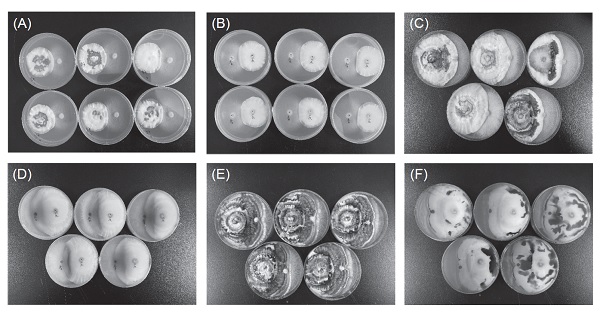All issues

Author:Shiang-Shiuan Yu and Yun-Sheng Lu*
Abstract:
In recent years, the average production of wood log shiitake in Taiwan was 264 tons, accounting for 0.6% of the market share in shiitake. The planting areas are mainly distributed in indigenous community of Yilan, Taoyuan, Hsinchu, Miaoli, Nantou, and Pingtung. Common microorganisms occurring during wood log cultivation belong to wood-decaying fungi. In addition, there was little domestic research about the effect of wood-decaying fungi on the yield and quality of wood log shiitake. Due to the "under-forest economy" policy promoted by the Council of Agriculture, Executive Yuan, ROC, the planting area of wood log shiitake has increased yearly. The government has also paid the attention to the diseases and pests or competitors that occurred during the cultivation of wood log shiitake. In this study, a fungus was isolated from the shiitake wood log collected from Alishan, Chiayi, and evaluated in our Mushroom Research Laboratory. After comparing the appearance of the fruiting bodies in the field and analysis of its ITS sequence, the fungus was preliminarily identified as Xylaria sp. A dual culture assay showed when the mycelium of Xylaria sp. CYX-1 confronted with that of Lentinula edodes Br-1 on a potato dextrose agar (PDA) medium, the mycelial growth of the latter was significantly inhibited. After two weeks of culturing on the medium, the mycelium of Xylaria sp. could cover that of L. edodes. It showed that Xylaria sp. CYX-1 was detrimental to the mycelial growth of L. edodes Br-1 and could be the competitor of the latter. The recommended fungicide thiabendazole for application in the cultivation of shiitake was used in this study to test the fungicide sensitivity of Xylaria sp. CYX-1. The result showed that the mycelium of Xylaria sp. CYX-1 was totally inhibited on the PDA medium with 30 ppm of thiabendazole and in a filter paper-disk test with 1,000 dilution fold of thiabendazole [60% suspension concentrates (SC)]. Therefore, thiabendazole could potentially be used to control Xylaria sp. This is the first report on the possibility of Xylaria sp. as a competitor of shiitake cultivation on the wood log in Taiwan. Further surveys of the damage caused by Xylaria sp. in other planting areas of wood log shiitake will be needed. The results of the fungicide sensitivity of Xylaria sp. to thiabendazole may provide an important reference to control Xylaria sp. during shiitake wood log cultivation.
Key words:Xylaria sp., Wood log shiitake, Under-forest economy, Thiabendazole
Download:![]() PDF Links
PDF Links
- 1. Development of Tractor-Mounted Seedling Transplanter for Sweet Potato
- 2. Synergistic Effect of Additional Gas on the Toxicity of Phosphine to Sitophilus oryzae and Sitophilus zeamais (Coleoptera: Dryophthoridae)
- 3. Effects of Temperature and Solar Radiation on Growth Traits and Plant Elements in Purple Leafy Sweet Potato
 Submit your manuscript
Submit your manuscript
 Guide for authors
Guide for authors